Southern Agrimony, Harvest Lice, Swamp Agrimony, Small-flowered Agrimony - Agrimonia parviflora
|
Agrimonia parviflora - Southern Agrimony, Harvest Lice, Swamp Agrimony, Small-flowered Agrimony.
Agrimonia is a relatively small genus, with about 10 to 15 species worldwide. More than half of those are found in the United States, with about 7 native species. The species can be somewhat difficult to differentiate at a glance, with the keys to identification focusing on the type of hairs on the stems and leaves, and on the number of major and minor leaflets on the compound leaves. Agrimonia parviflora is one of the more widely distributed species, found in moist areas of 29 states from the eastern Great Plains to the East Coast in the United States, as well as in Ontario, Canada. Agrimonia species can be very difficult to determine to the species, with only subtle differences between them.
Found in:
AL, AR, CT, DE, GA, IA, IL, IN, KS, KY, LA, MA, MD, MI, MO, MS, NC, NE, NJ, NY, OH, OK, PA, SC, SD, TN, TX, VA, WI, WV | 
Distribution of Agrimonia parviflora in the United States and Canada:
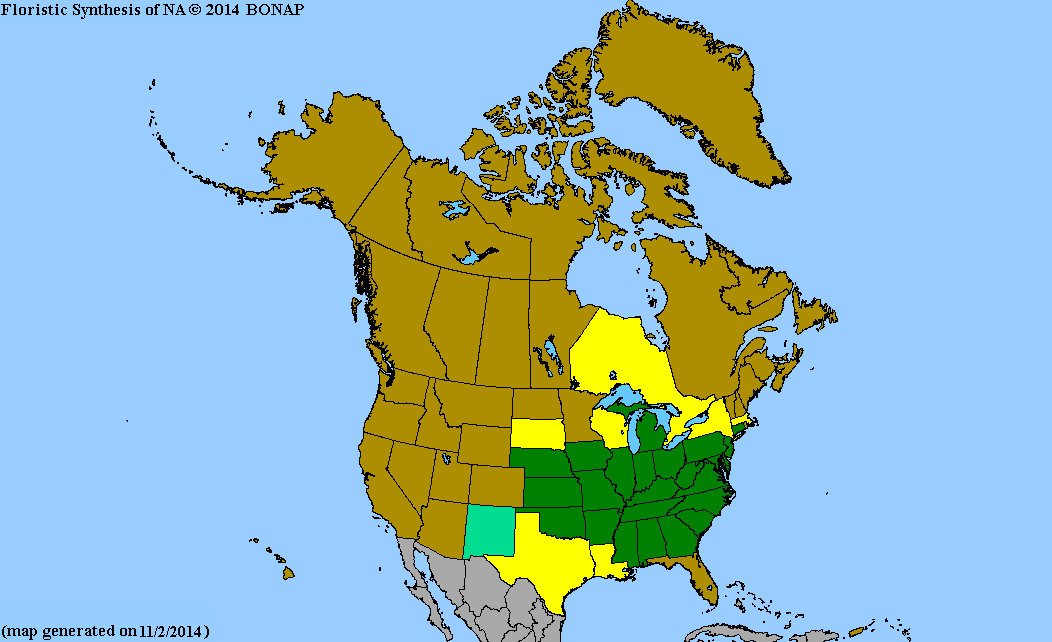
Map courtesy of The Biota of North America Program.
Map color key
Search Our Database: Enter any portion of the Scientific, Common Name, or both.
Do a general Google search of the entire site:
#ad
 Follow USWildflowers on Twitter
| | Site: North River Road, Monroe County, TN Date: 2017-August-24 | Photographer: Gerald C Williamson
Nikon D7000 | | All Agrimonia have 5 yellow petals. Those of Agrimonia parviflora are only about 1/4" across, and are on pedicels that are about 1/8" long. | | 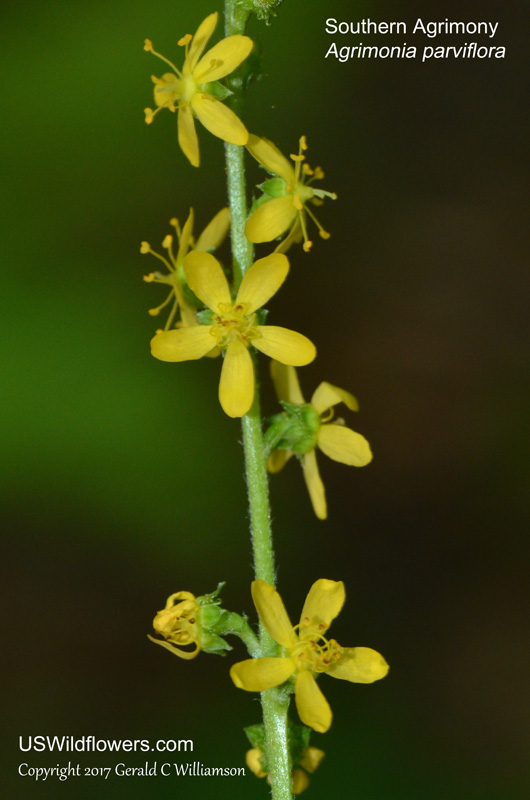
| | Site: North River Road, Monroe County, TN Date: 2017-August-24 | Photographer: Gerald C Williamson
Nikon D7000 | | The inflorescence is hairy with both sessile glandular and erect, non-glandular hairs. They are both terminal and axillary, and may contain over 100 flowers. | | Click on the photo for a larger image
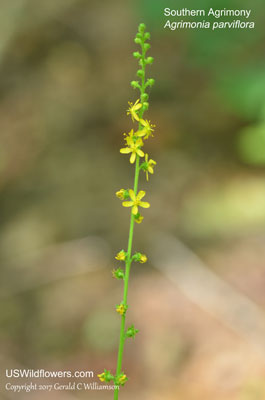
| | Site: North River Road, Monroe County, TN Date: 2017-August-24 | Photographer: Gerald C Williamson
Nikon D7000 | | This photo demonstrates the diagnostic characteristic I used primarily to determine that this is Agrimonia parviflora - the number of major leaflets, and the number minor leaflets between the major leaflets. In the area where I found this plant (mountains of eastern Tennessee) the only species of Agrimonia with this many major leaflets (I count 13 or 15) is A. parviflora. A. incisa, while not found in the area where I photographed this plant, does have a somewhat overlapping range, and may have a similar number of major leaflets. A. parviflora may have 1 to 4 pairs of minor leaflets between the majors; A. incisa may have 1 to 3 pairs, so while this plant has 4; if there are fewer that is not definitive. The major leaflet margins of A. parviflora are dentate or serrate, while those of A. incisa are incised - the indentations are much deeper than those of A. parviflora. To the right of the picture you can see the hairy stem, but are probably not able to detect in this photo the sessile glandular hairs on the stem. Also note the incised leaf stipule - shape of this can be an identification characteristic. | | Click on the photo for a larger image
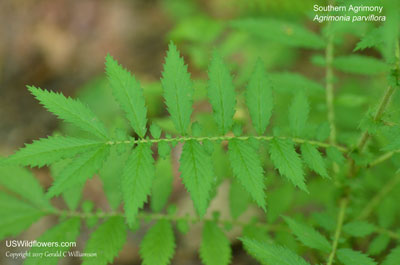
| | Site: North River Road, Monroe County, TN Date: 2017-August-24 | Photographer: Gerald C Williamson
Nikon D7000 | | Southern Agrimony can be up to about 6 feet tall. The compound leaves are alternate up the stem, with the plant terminating with an inflorescence of small yellow flowers. There may also be inflorescences arising from the leaf axils. | | Click on the photo for a larger image
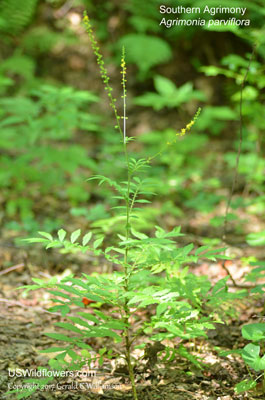
|
References used for identification and information:
|
|
| |
| #ad
|
|






